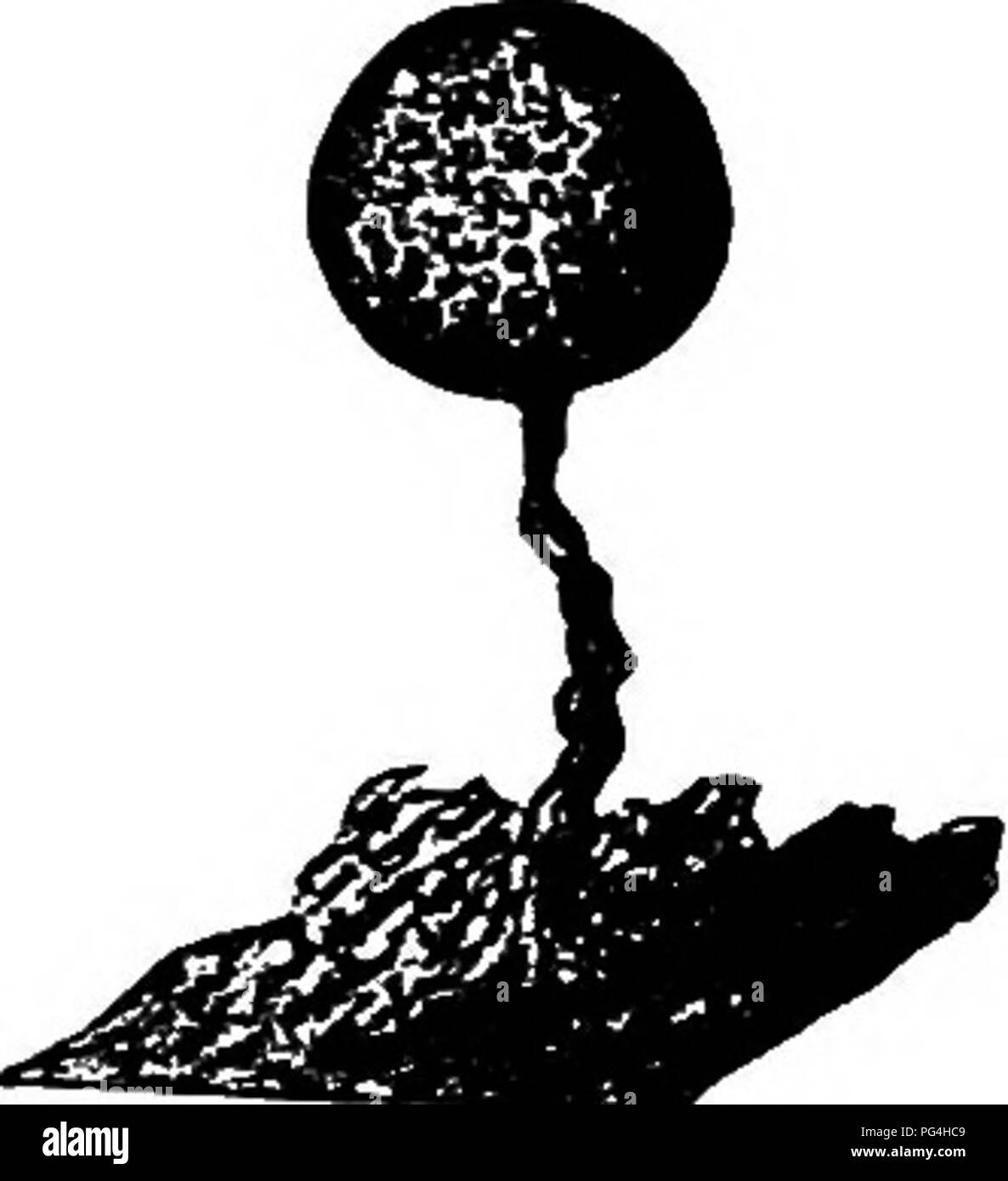. The fungi which cause plant disease . Plant diseases; Fungi. 12 THE FUNGI WHICH CAUSE PLANT DISEASE Capillitium in part hyaline Sporangium vaselike, or more or less tubu- lar Opening irregularly 5. Physarella. Opening by a lid 6. Crateiium. Sporangia various, dehiscence irregular CapiUitium evenly branched; the calca- reous nodes small, fusiform 7. Tilmadoche. CapiUitium intricate 8. Physaium, p. 12. The species of Fuligo produce very large yellowish plasmodia which change to yellowish or brownish aethalia. Some are credited with damage similar to that of the preceding species.^* Physarum Pe

Image details
Contributor:
Central Historic Books / Alamy Stock PhotoImage ID:
PG4HC9File size:
7.1 MB (138.9 KB Compressed download)Releases:
Model - no | Property - noDo I need a release?Dimensions:
1510 x 1655 px | 25.6 x 28 cm | 10.1 x 11 inches | 150dpiMore information:
This image is a public domain image, which means either that copyright has expired in the image or the copyright holder has waived their copyright. Alamy charges you a fee for access to the high resolution copy of the image.
This image could have imperfections as it’s either historical or reportage.
. The fungi which cause plant disease . Plant diseases; Fungi. 12 THE FUNGI WHICH CAUSE PLANT DISEASE Capillitium in part hyaline Sporangium vaselike, or more or less tubu- lar Opening irregularly 5. Physarella. Opening by a lid 6. Crateiium. Sporangia various, dehiscence irregular CapiUitium evenly branched; the calca- reous nodes small, fusiform 7. Tilmadoche. CapiUitium intricate 8. Physaium, p. 12. The species of Fuligo produce very large yellowish plasmodia which change to yellowish or brownish aethalia. Some are credited with damage similar to that of the preceding species.^* Physarum Persoon Sporangia plasmodiocarpous, sethalioid or distinct; the peridium usually simple, sometimes double, irregularly dehiscent, more or less definitely calcareous; capillitium a uni- form irregular net, dilated and calcareous at the nodes, adherent on all sides to the peridial wall. P. cinereum (Batsch), Pers., the species most commonly reported as injurious, forms its tiny sessOe, gray sporangia in great num- bers on living plants, *' ^'^ often smother- FiG. 3.-Ph78arum *"S them. The peridium is lime charged as sporangium. After are also the nodes of the capillitium. The "^ " ^' spores are brown or violet, and warty. P. bivalve F. has been noted as injuring young bean plants.^' Dendrophagus globosus Toumey was reported by Toumey'' as the probable cause of crown gall, but such relation is doubt- ful (p. 36). It is said to be closely related to Physarum.. Please note that these images are extracted from scanned page images that may have been digitally enhanced for readability - coloration and appearance of these illustrations may not perfectly resemble the original work.. Stevens, Frank Lincoln, 1871-1934. New York : Macmillan